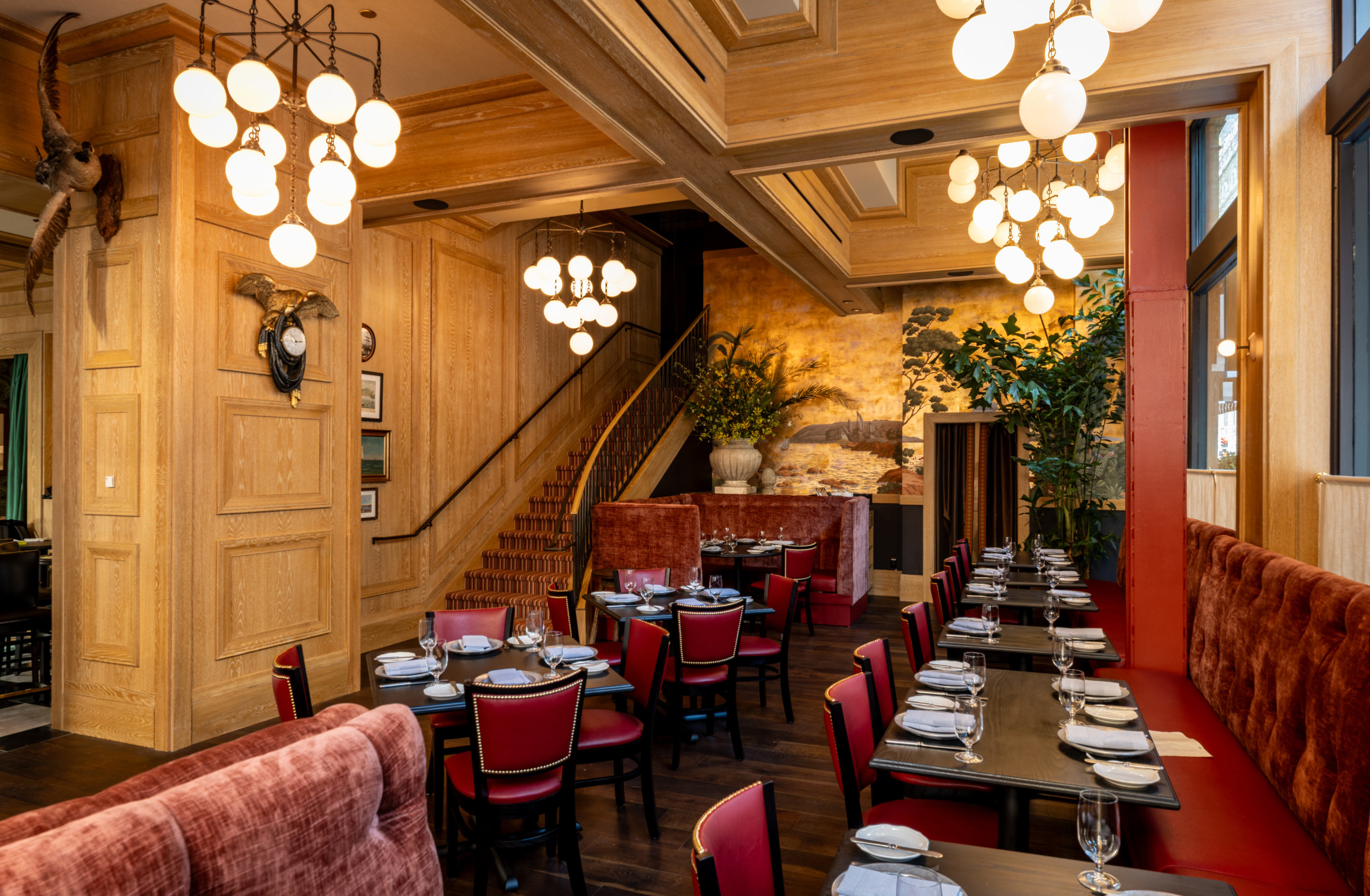
Integrating AI-powered restaurant management systems with existing reservation and POS platforms has become essential for modern restaurant operations. With AI expected to power 95% of customer interactions by 2025, restaurants can no longer afford to operate with disconnected systems (Sobot). The good news? What once took months of complex integration work can now be accomplished in under two weeks with the right approach and tools.
Hostie AI, designed specifically for restaurants by restaurant operators, offers seamless integration capabilities with major reservation systems and POS platforms (Hostie AI). This comprehensive playbook will walk you through the exact steps, API configurations, and testing protocols needed to connect Hostie AI with both OpenTable and Toast POS systems in less than 14 days.
By following this guide, you'll learn from real-world implementations, avoid common pitfalls, and establish a robust integration that can handle over 80% of guest communications automatically, just like partner establishments such as Flour + Water and Slanted Door have achieved (Hostie AI).
The restaurant industry is experiencing a significant shift toward automation, with about 50% of hospitality operators in the US and 51% in Canada planning to integrate various types of automation technology into their businesses (Xenia). This trend isn't just about keeping up with technology—it's about survival and growth in an increasingly competitive market.
Restaurant automation systems can streamline most daily responsibilities, activities, and procedures, allowing staff to focus on what matters most: delivering exceptional hospitality (Xenia). When your AI system integrates seamlessly with existing tools, it creates a unified ecosystem that eliminates data silos and reduces manual errors.
Hostie AI's integration approach recognizes that restaurants already have established workflows and systems in place. Rather than forcing operators to abandon their current tools, Hostie AI integrates directly with existing reservation systems, POS systems, and even event planning software (Hostie AI). This philosophy ensures minimal disruption during implementation while maximizing operational efficiency.
Before diving into API configurations and webhook settings, proper preparation is crucial for a smooth integration process. Here's your essential pre-integration checklist:
OpenTable Integration Prerequisites:
Toast POS Integration Prerequisites:
Technical Team Requirements:
Operational Team Preparation:
Before beginning any integration, ensure you have:
With AI-powered customer service tools saving businesses up to 2.5 billion hours annually and boosting productivity by as much as 400%, proper preparation ensures you'll realize these benefits quickly (Sobot).
The OpenTable integration begins with establishing secure API connections. While specific OpenTable API documentation provides technical details, the key is understanding the OAuth scopes and permissions required for seamless data flow (OpenTable API Documentation).
Step 1: OAuth Configuration
Required OAuth Scopes:
- reservations:read
- reservations:write
- availability:read
- restaurant:read
- customer:read (with appropriate privacy compliance)
Step 2: Webhook Endpoint Setup
Establish webhook endpoints for real-time data synchronization:
Step 3: Data Sync Intervals
Optimal sync intervals based on restaurant volume:
Critical Test Scenarios:
Reservation Creation Test
Modification Handling Test
Cancellation Processing Test
Common Permission Errors and Solutions:
| Error Code | Description | Solution |
|---|---|---|
| 401 | Unauthorized access | Verify API credentials and refresh tokens |
| 403 | Insufficient permissions | Check OAuth scopes and restaurant admin approval |
| 429 | Rate limit exceeded | Implement exponential backoff and request queuing |
| 500 | Server error | Implement retry logic with circuit breaker pattern |
Availability Management Setup:
Configure dynamic availability based on:
Customer Preference Integration:
Set up systems to capture and utilize:
Hostie AI's multilingual capabilities, supporting 20 languages fluently, ensure that customer preferences are captured accurately regardless of the guest's primary language (Hostie AI).
Toast POS integration requires careful attention to menu synchronization and order flow management. The system must handle both phone orders processed by Hostie AI and in-person orders seamlessly.
Menu Synchronization Setup:
Required API Endpoints:
- /menu/items (GET, PUT)
- /menu/modifiers (GET, PUT)
- /menu/availability (GET, PUT)
- /orders (POST, GET, PUT)
- /payments (POST, GET)
Real-time Inventory Integration:
Configure automatic menu item availability updates:
With 20% of customers preferring to order over the phone, ensuring seamless order processing is crucial (ItsACheckmate). Hostie AI's voice technology can handle 95% of orders without human intervention, making thorough testing essential (ItsACheckmate).
Comprehensive Order Testing Protocol:
Simple Order Test
Complex Order Test
Edge Case Testing
Testing Scripts for 90% Issue Detection:
# Sample testing script structure
def test_order_integration():
test_cases = [
simple_order_test(),
complex_order_test(),
modification_test(),
cancellation_test(),
payment_failure_test()
]
for test in test_cases:
result = execute_test(test)
log_results(result)
if result.status == 'FAILED':
alert_team(result.error_details)
System Harmonization:
Ensure all three systems (Hostie AI, OpenTable, Toast POS) work together seamlessly:
Staff Training Implementation:
Conduct comprehensive training sessions covering:
Go-Live Checklist:
A Michelin-starred bistro's 8-week rollout provides valuable insights that we've condensed into our 2-week timeline. Key learnings include:
Week 1-2 (Original Timeline): API setup and basic testing
Our Condensed Approach: Parallel processing of OpenTable and Toast integrations
Week 3-4 (Original Timeline): Staff training and soft launch
Our Condensed Approach: Intensive training during integration testing
Week 5-8 (Original Timeline): Gradual feature rollout and optimization
Our Condensed Approach: Full feature activation with close monitoring
Results Achieved:
A recent multi-location restaurant group integration revealed critical success factors:
Standardization is Key:
Establish consistent configurations across all locations while allowing for local customization. This approach reduced integration time by 60% for subsequent locations.
Phased Rollout Benefits:
Starting with the highest-volume location provided valuable insights that streamlined implementations at other sites.
Staff Champion Program:
Identifying and training "AI champions" at each location accelerated adoption and reduced resistance to change.
The success of these implementations demonstrates why Hostie AI has secured a $4M seed round led by Gradient Ventures, validating the platform's effectiveness in real-world restaurant environments (Hostie AI).
Data Synchronization Issues:
API Rate Limiting:
Network Connectivity:
Staff Resistance:
Customer Confusion:
Performance Monitoring:
Call Management Metrics:
Reservation Efficiency:
Order Processing:
Week 1 Post-Launch:
Week 2-3:
Week 4:
With 73% of shoppers believing AI improves their overall experience, measuring customer satisfaction becomes crucial for long-term success (Sobot).
Peak Hour Management:
Configure dynamic resource allocation during busy periods:
Seasonal Adaptations:
Prepare your integration for seasonal variations:
Multi-Location Scaling:
If expanding to multiple locations:
Common Error Codes:
Emergency Procedures:
As AI continues to revolutionize restaurant operations, with artificial intelligence expected to be a game-changer for restaurants in 2024 and beyond, additional integration opportunities emerge (AppFront).
Emerging Integration Possibilities:
AI Enhancement Opportunities:
Hostie AI's platform continues to evolve, with predictive analytics and customer data analysis enabling restaurants to create highly personalized experiences (AppFront). Future enhancements may include:
Integrating Hostie AI with OpenTable and Toast POS in under two weeks is not only possible but highly beneficial for restaurant operations. By following this comprehensive playbook, restaurants can achieve the same level of automation that has enabled partner establishments to handle over 80% of guest communications automatically (Hostie AI).
The key to success lies in thorough preparation, systematic implementation, and continuous monitoring. With Hostie AI starting at $199 per month, the investment quickly pays for itself through improved efficiency, increased revenue, and enhanced customer satisfaction (Hostie AI).
What originally started as a solution to help reduce operational tension has quickly grown into a comprehensive platform that transforms how restaurants interact with their guests (Hostie AI). By implementing this integration playbook, your restaurant joins a growing community of operators who have embraced AI to enhance their hospitality while maintaining the personal touch that makes dining special.
Remember, successful integration is just the beginning. The real value comes from the ongoing optimization, staff development, and customer experience improvements that follow. With proper implementation and measurement, your restaurant will be well-positioned to thrive in the AI-powered future of hospitality.
The complete integration process can be accomplished in under 14 days following this step-by-step playbook. The timeline includes API configuration, system testing, staff training, and performance optimization phases. Most restaurants see initial functionality within the first week, with full optimization completed by day 14.
Hostie AI is specifically designed by restaurants for restaurants, featuring Jasmine, an AI assistant that can fluently speak 20 languages and handle calls, texts, emails, reservations, and orders 24/7. Unlike generic AI solutions, Hostie integrates seamlessly with major reservation systems and leading POS platforms, providing comprehensive restaurant management automation.
Yes, Hostie AI can handle 95% of phone orders without human intervention, which is crucial since 20% of customers prefer ordering over the phone. The system combines natural conversation abilities with sophisticated order processing, ensuring seamless integration with your Toast POS system for accurate order management and payment processing.
Key metrics include order accuracy rates, reservation booking efficiency, customer response times, and staff productivity improvements. With AI expected to power 95% of customer interactions by 2025, restaurants typically see up to 400% productivity boosts and significant reductions in missed calls and booking errors within the first month of implementation.
The integration requires active OpenTable and Toast POS accounts with API access, stable internet connectivity, and basic technical setup capabilities. The playbook includes exact API configurations, authentication protocols, and webhook setups. No advanced programming knowledge is required as the guide provides step-by-step instructions for all technical components.
The integration automates reservation management, order processing, and customer communications across all channels. Restaurant automation systems can streamline most daily responsibilities and procedures, with 50% of hospitality operators already planning to integrate automation technology. This results in reduced labor costs, fewer human errors, and improved customer satisfaction through 24/7 availability.
RELATED


